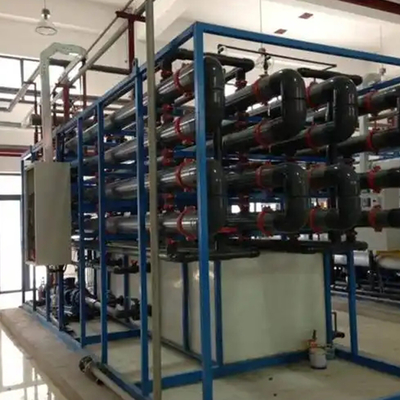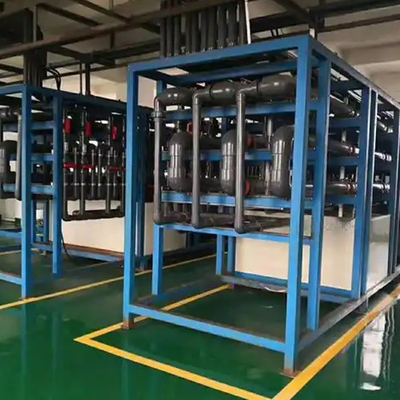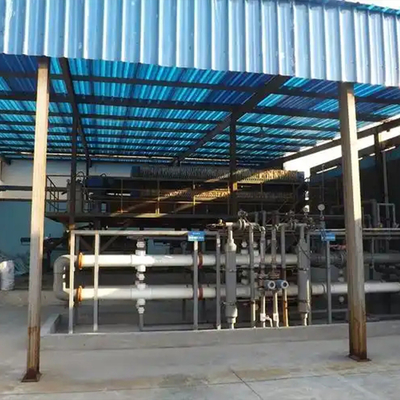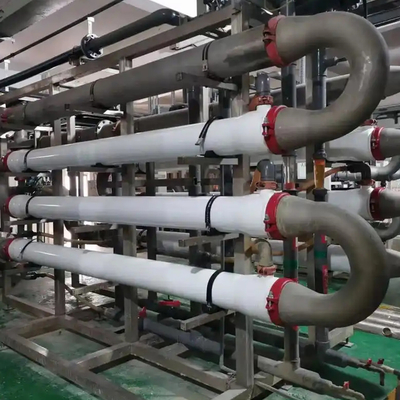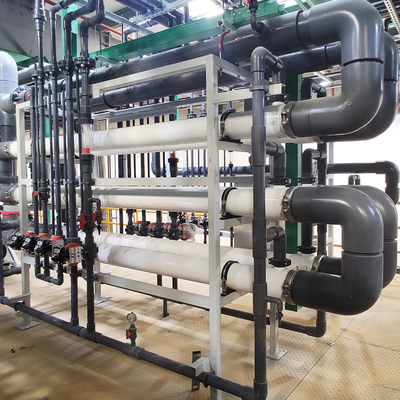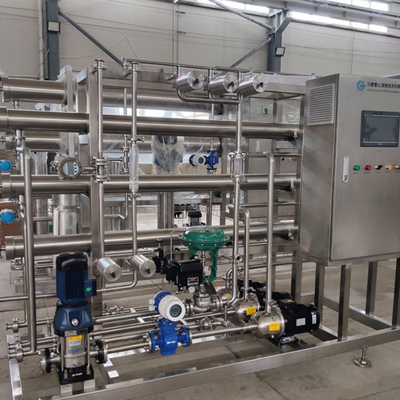What is the TUF device? Do you know its materials, features and applications?
The TUF device is actually a membrane layer of fluorine-containing polymer cast on the inner wall of a sintered organic polymer porous support tube. The materials of each part are as follows:
1. Membrane shell: PVC or CPVC material. Generally speaking, we directly use Sch40 PVC straight tubes as TUF membrane shells after processing. The diameter of the membrane shell ranges from 1-1/4 inches to 8 inches. This type of membrane shell can be used in most wastewater treatment occasions. In some cases, considering special chemical resistance requirements or improved temperature resistance, CPVC or stainless steel membrane shells may be required.
2. Sintered porous support tube: HDPE (high-density polyethylene) is a commonly used support tube material and is suitable for most occasions. If necessary, PVDF (polyvinylidene fluoride) can also be used to sinter and form a porous support tube.
3. Membrane layer: PVDF material, its chemical properties.
Features of TUF tubular softening membrane:
1. Chemical resistance: The operating pH range is between 0-14, and it can be used for chemical cleaning with high concentrations of acid/alkali/oxidant solutions.
2. Resistance to friction and particulate matter.
3. It can handle extremely high concentrations (up to 5% mass concentration), sometimes even higher.
4. The membrane flux can be restored by chemical cleaning.
5. Extremely long service life: for example, a system has been in use for more than 12 years.
6. Cross-flow filtration operation, which means that the power consumption is higher than other membrane filtration processes.
7. The system using TUF has good tolerance to upstream process failures and fluctuations in influent water quality because there is no unstable coagulation, flocculation and gravity sedimentation equipment upstream.
Industry application of TUF tubular softening membrane:
Tubular filtration membrane system can be used to replace traditional sedimentation tanks or clarification tanks to obtain better water quality. The membrane filter uses a polymer membrane layer to separate and intercept suspended solids from wastewater. This separation process does not require the insoluble matter to form a large and heavy enough alum flower. It can be understood that it only needs to convert the dissolved substance into an insoluble substance, and then it can be separated from the wastewater with high efficiency.
In a water treatment system that includes RO and wastewater reuse RO, TUF can not only be used as an alternative process to the clarifier, but also as an important part of the wastewater reuse RO process. Due to the high quality of the filtered water, the water produced by TUF can be directly sent to the RO system without any further filtration and turbidity removal process. In contrast, if a clarifier is used, the subsequent multi-media filter, filter element filter and hollow fiber ultrafiltration and other turbidity removal equipment are generally required before RO. In other words, TUF can directly connect the wastewater treatment process section (such as the chemical dosing reaction unit) and the RO desalination process section in series very simply. The overall treatment process flow can be greatly shortened, and the reliability of the system is greatly enhanced.
The water treatment system using TUF is quite robust in terms of operating performance, the operation is simple, and it is relatively easy to adapt to changes in the influent water quality and water volume. The chemical dosing reaction part can be automatically put into operation, and TUF automatically enters the operating mode from the standby mode. Just start the circulation pump and open the water production valve, and it can be put into operation in 1 minute.

 Your message must be between 20-3,000 characters!
Your message must be between 20-3,000 characters! Please check your E-mail!
Please check your E-mail!  Your message must be between 20-3,000 characters!
Your message must be between 20-3,000 characters! Please check your E-mail!
Please check your E-mail! 
